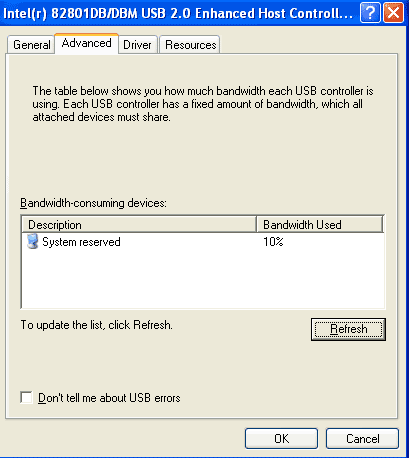USB Technology: Multi-TT Hub Goes Head-to-Head With Single-TT
Universal Serial Bus: ABC
The two common USB standards differ greatly in terms of transfer rates. USB 1.1, which has been around for many years, offers transfer rates of up to 12 mbit/s. USB 2.0, which only came out 18 months ago, is growing in popularity thanks to its transfer rates of up to 480 mbit/s.
Since the USB standard was designed to be an interface for all kinds of peripherals, it was planned from the very beginning that devices would be run on USB hubs. All you have to do is hook up the hub to an USB port on your computer and voila! You now have several more available ports. The advantage of this set-up is that you can run more devices than you have connectors. There is a downside, though: you may encounter problems when using high-performance USB devices because the bandwidth has to be divided up among the different devices.
To understand why performance problems are not uncommon, you need to know something about the USB protocol. USB devices can access any of the four sub-protocols: bulk, control, interrupt and isochronous. They help allocate the "attention span" (read: bandwidth) a device needs to operate.
No matter what else happens, 10% of the bandwidth is reserved for the control protocol, which directs all the transfers. Audio or video devices such as webcams or speaker systems work isochronously ("in real time") because they always need a minimum amount of bandwidth. Most external storage devices use the bulk protocol, while USB keyboards or mice avail themselves of the interrupt protocol.
No matter what, 10% of the USB bandwidth goes to the USB controller.
You've probably already guessed the problem: whenever you connect two USB devices that both use the isochronous protocol and take up a certain amount of bandwidth, you'll have very little left over for any other devices. USB is a first-come-first-served standard, so if you connect a third or a fourth device to the hub, you may not have enough bandwidth left over to operate it.
Get Tom's Hardware's best news and in-depth reviews, straight to your inbox.
Current page: Universal Serial Bus: ABC
Prev Page The Hub Hubbub: Intelligent Vs. Conventional USB 2.0 Hubs Next Page Single TT Or Multi TT
Patrick Schmid was the editor-in-chief for Tom's Hardware from 2005 to 2006. He wrote numerous articles on a wide range of hardware topics, including storage, CPUs, and system builds.
-
I am having a really hard time resolving this issue on a brand new Asus desktop machine with the Asus motherboard P8H61-MX. It seems that Asus have cut a corner or two and only included a single TT setup on the motherboard which has 6 inbuilt USB ports. I am having real difficulty finding a PCI express USB card here in the UK which actually has a built in Multi TT setup. My Novation NIO 2|4 soundcard and my Vestax VCI-100 midi controller fail to function without multi TT, and if anyone has any advice it would be appreciated.Reply
David
